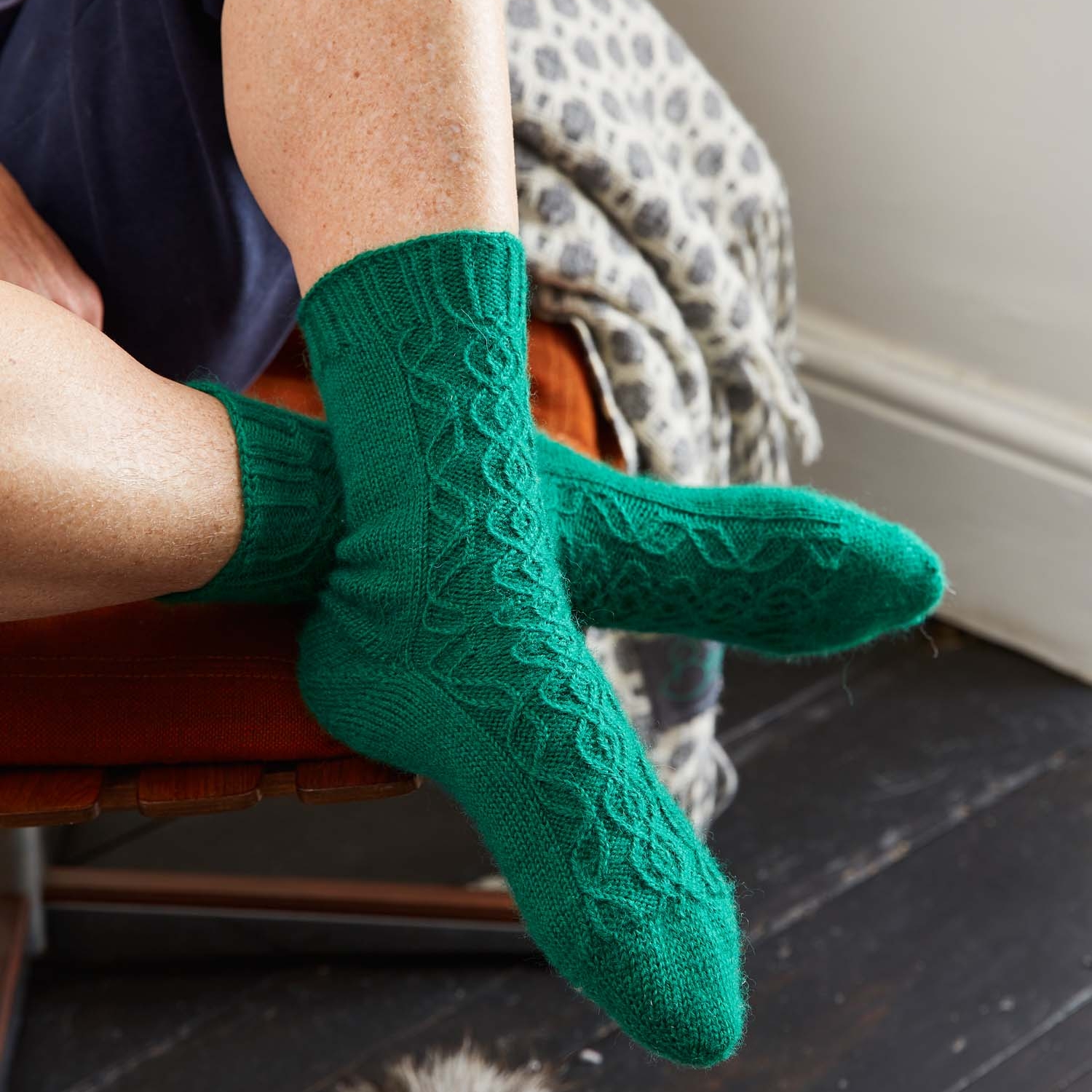I've never been in a charity calendar (and never will), but for the purposes of A Year of Techniques, I'm Mr December! The combination of the deep green colour of the yarn we chose for the project and the tangled cable pattern made me think of the ivy that grew up the side of our shed many years ago. Hedera Helix, the Latin name for ivy, seemed apt.
These socks should knit up slightly quicker, and the finished fabric be slightly thicker, than your usual socks because of the yarn used. Schoppel Admiral 6ply is an undersung yarn that deserves to be appreciated by a far wider audience. It comes in a range of intense colours and sits between 4ply and DK weight, so pretty much a sport weight. Since it comes in 150g balls, it really is an affordable workhorse yarn. I've chosen to knit it at a firm gauge in these socks to ensure that they are really hard wearing, and that the cables really "pop".
In trying to keep a flow through the monthly techniques, I decided to make these socks toe-up, using Judy's Magic cast on and to use a cabled motif to revisit the tutorial from November's Yellow Wagtail scarf. In the past I have gone to Barbara G. Walker for inspiration and ideas for stitch patterns to incorporate in designs. However, for Hedera Helix, I went to Twisted-Stitch Knitting by Maria Erlbacher; a book that fascinated me from the first time I looked through. It is a collection of traditional stitch patterns from the Styrian Enns Valley of Austria and contains an assortment of motifs from the very simple to the large and complex, as well as patterns reproduced from the Landschaftsmuseum at Schloss Trautenfels. I love the fact that the charts bear no resemblance to any of the charts I have worked from, checked or created, with the combination of arrows and number 8s all over. It wasn't possible to use all of the stitch patterns I shortlisted (nobody has legs wide enough for all of the stitches), so I combined and adapted a couple of the charts to make the cabled panel that runs the length of the sock. For simplicity's sake, we adapted the charts to use the symbols that feature elsewhere in A Year of Techniques.
The monthly technique for December is afterthought heels. I've always thought of it as making a hat for your foot as the circular hole in your work is decreased much like the crown of a hat. You could of course make tube socks and forever have a line of waste yarn as evidence of your crime, but the afterthought heel is a neat alternative to the heel flap used in the Antirrhinum Socks.
If you'd like the yarn to make the Hedera Helix Socks, you can either buy a Winter Kit, with yarns for the projects for December to February, or you can buy Admiral 6ply in a range of colours, from our shop.
Come back tomorrow to find out all about the penultimate project.
It's not too late (at all) to join in with A Year of Techniques - if you order a print + ebook combination (£19.99 plus shipping) you'll get the first 6 patterns now, with the remaining 6 delivered on 6th September, and the print book will be shipped very shortly. We can't wait to share it with you!
March 2022 Update: We are now managing whoelsale distribution in house. Our books are currently available from Purlescence (UK), Modern Daily Knitting (USA) and Strickmich (EU).




